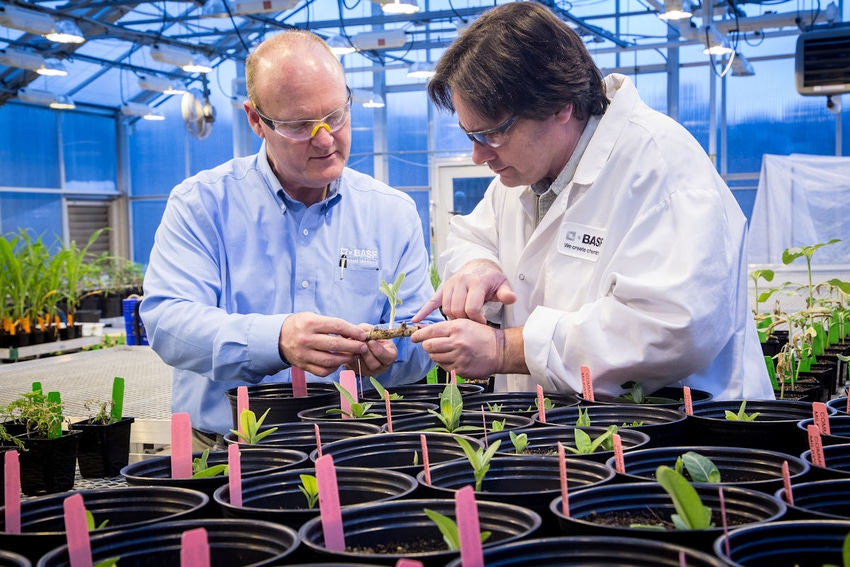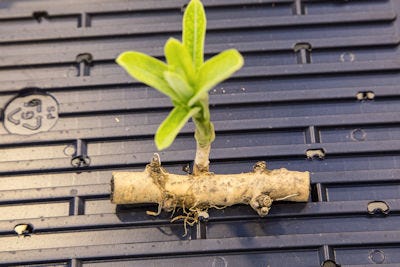March 2, 2016

The majesty of a Monarch butterfly has made this colorful insect an official state insect symbol in more than a half dozen states, but a range of issues has worked against the population of these butterflies. A combination of lost habitat in its hibernation location in Mexico, and declining availability of a key plant – the milkweed – is causing problems. And BASF wants to work with farmers to create a solution.
The company held its 10th annual Science Behind event with a focus on its new program – Living Acres – which will work with farmers to raise milkweed plants on their farms. You read that right, BASF wants you to plant this specific, and special, weed on your farm. Read on to learn more.
"Monarch butterfly populations vary considerably from year to year, but since the mid-1990s they've been declining," says Luke Bozeman, group leader, field biology, BASF. "One important factor is the availability of milkweed."
He says that BASF does not have the goal of "going out and convincing a farmer to plant milkweed in corn or soybean fields," he notes. "High-yield agriculture is a contributor to sustainability, and we need to maintain those yields, we don't want to create a problem down the road. We want to identify areas where a farmer can plant milkweed to support Monarchs."
The key is sustainability, not only for the corn and soybean acre but beyond the farm. Biodiversity is an important part of that, says Max Safarpour, department head, director of global regulatory and government affairs, BASF. "BASF is taking an active approach to find out how we can help farmers increase the biodiversity in their farms and also increase their habitat for Monarch butterflies," Safarpour says. "We call it Living Acres and it is a big leap to help farms increase biodiversity and sustainability in operations."
Safarpour says this is a "lighthouse" program for BASF – which means it is a high-priority project for the company.
Sustainability and beyond
Of course the magic word "sustainability" was part of the Science Behind discussion and Paul Rea, senior vice president, North America, notes that BASF is focused on sustainability because it offers value to the environment, and to a business. "The conversation of sustainability has gone off the rails into one of good versus bad where in the consumer's mind good food becomes organic, or locally grown food while bad is associated with commercial production. That's missing the point to be perfectly honest, there are bigger issues to address as a society."
He explains that all businesses – including BASF – have to find ways to "approach the way we use resources for future generations in the coming decades, and most of that higher population is going to life in urban areas."
He points to the fact that in the next few decades on a global level 70% of the population will live in urban areas, and what will that mean for infrastructure, power, education, sanitation, clean water. Rea points to the 28 mega cities today that are home to a half-billion people.
Rea explains that for the sustainability debate to remain "on the rails" the dialog needs to change and he recommends four areas for elevating the discussion: "First we need to make a deliberate decision – what kind of earth do we want to have?; second it is not about good or bad choices, we need to commit to get better each and every year; we also have to be open to new ideas and recognize we can get better which requires an open approach to new technologies and innovations and using science and science-based research; and finally we need less talk and more action, and that's not just farmers or companies but individuals, we need to make the footprint smaller to sustain resources."
Which leads to the Living Acres program, a place where BASF is taking action and dedicating resources to help solve a problem – the decline of the Monarch butterfly. "As the world's largest chemical company we have a footprint and have an impact. Our purpose as an organization is to create chemistry for a sustainable future," Rea says. That work will be science-based to sustain resources for the future.
Digging into Living Acres
BASF put its money where its mouth is with the Living Acres program dedicating a small area in its Holly Springs, N.C., field research facility to the cultivation of milkweed. The key was to understand not only the plant and its growth, but how it could impact populations of Monarch butterflies.
The milkweed is the cornerstone of the life cycle of the Monarch, it's where eggs are laid and larvae thrive to pupate into butterflies. The plant itself, however, has been "just a weed" for some time. What really is the lifecycle of the plant?
Harold Coble, professor emeritus, and weed scientist, North Carolina State University, is working with BASF to better understand this critical plant – which for more than 50 years farmers have focused on controlling, not preserving. So now comes the hard part – establishing a milkweed stand on the farm.

BASF has found that establishing milkweed from root stock - simply planting root pieces - can help establish stands relatively quickly under the right conditions.
BASF worked with Coble to explore the potential for cultivating the plants – from seed or from root pieces. The research, conducted in 2015 found that creating milkweed refuges takes an upfront investment of time, but once established it should support itself year after year with minimal effort.
Coble explains that just planting milkweed seeds in an area won't get the job done. "The milkweed plant isn't very hardy when grown from seed," he says. "But planting them indoors, or in a greenhouse, to grow into seedlings before planting them outdoors improves their ability to succeed."
A history with milkweed
The weed scientist actually studied milkweed back in the 1960s as part of his graduate degree while at the University of Illinois. But his work then was, ironically, focused on controlling the weed, not establishing it.
Coble has also found that establishing the plants from roots, more like growing a potato, offers the potential for faster establishment. "Plants from root sections are much more vigorous than seedlings and will grow rapidly," he says. "They can easily reach up to 6 feet in height under good growing conditions."
Yes, BASF is talking about farmers planning milkweed seeds in peat pots indoors to grow seedlings, then plant them outdoors in refuge areas where you don't grow crops to create a haven for Monarchs.
Bozeman notes that the work won't happen overnight, and even Coble says when he shares the idea with farmers he's met with skepticism. Most farmers are on the side of the idea that a dead weed is the only kind of weed to have.
There's help, however, the company has created a best practices brochure that even includes seven steps for effectively starting a successful milkweed stand. The aim is for farmers to identify non-crop areas as potential milkweed plots. Coble notes you don't have to have 1,000 seedlings to make this work, a small area of milkweeds can have a dramatic impact.
"We have planted a small plot of milkweed at our Holly Springs facility and workers there saw an increase in Monarch butterflies in the first year," Bozeman says. The plot, which was used to test seedling approaches too, used less than an acre, yet there was a visible improvement in Monarch sightings. Small moves can make a big difference.
If you're interested in starting your own milkweed plot to help support Monarch butterflies, not just throw out a few seeds, visit agro.basf.us/sustainability to learn more about Living Acres and download the best practices brochure written by Coble, and one he calls a "recipe book" for growing milkweeds.
About the Author(s)
You May Also Like






